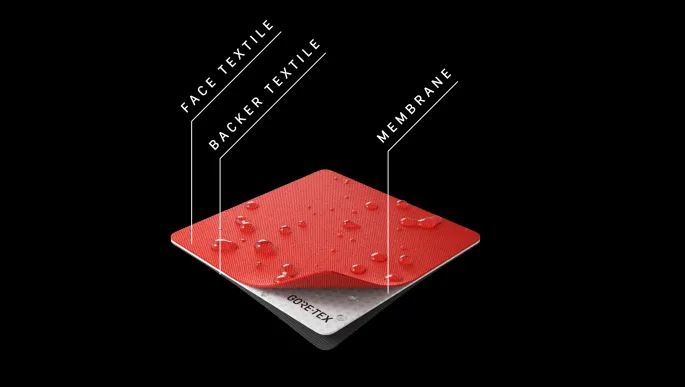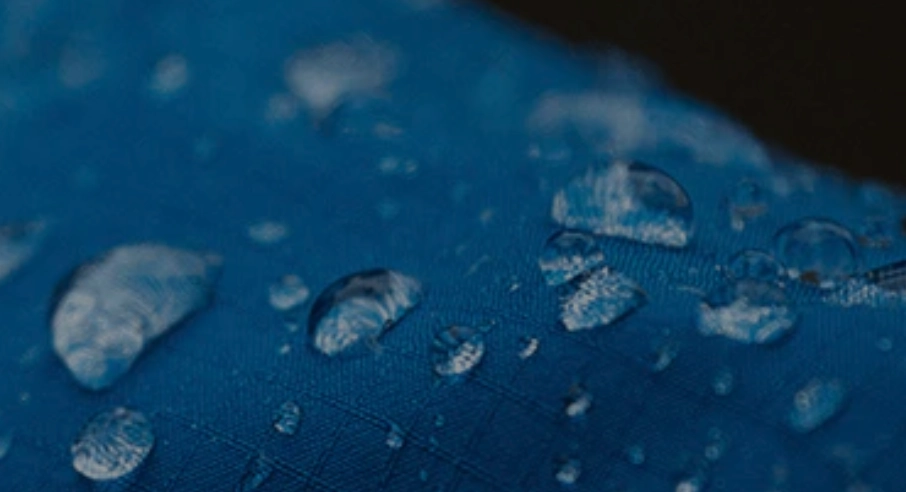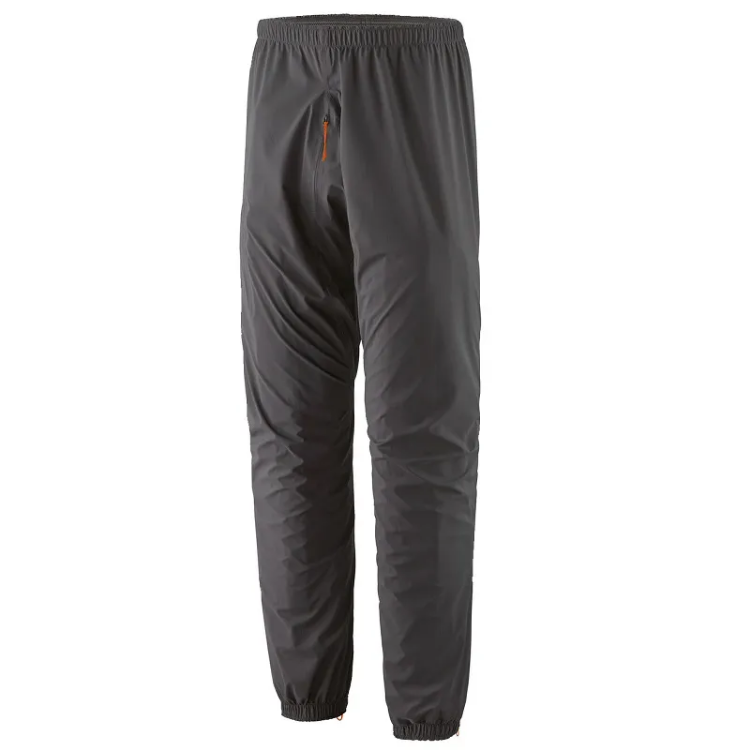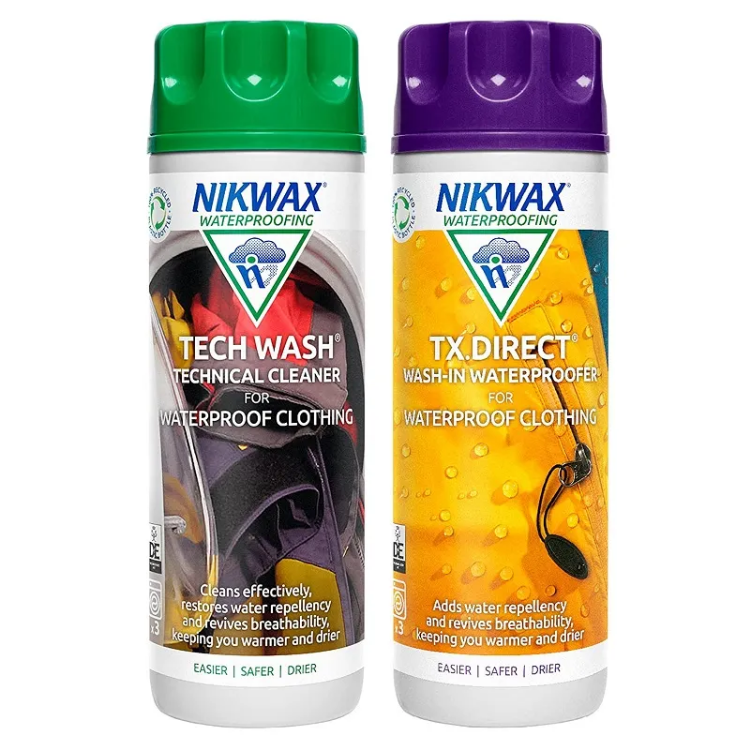Pre-ramble
The vast majority of outdoor brands are owned or run by responsible people that care about the outdoor environment. And all outdoor brands are aware that the vast majority of their potential customers care about the outdoor environment and that they will therefore look kindly on / show a preference towards brands that are doing what they can to help the environment. So Up and Under as an outdoor retailer that has long thought hard about environmental concerns also puts weight towards brands that are doing positive things towards this end. One of the first clothing brands that we started working with back in the 70's was Patagonia for that very reason. The most responsible brands in turn put ongoing expectations on us retailers in order to keep working with them, e.g. we have installed solar power panels and power storage amongst other things in order to reduce our carbon footprint too.
Over the past few years we have seen an increasing use of recycled material in outdoor products and their packaging (e.g. Patagonia using fibres made from discarded fishing nets reclaimed from the oceans). We have also witnessed moves to make more product recyclable, solution dying to reduce the amount of water and dyes used and effluent created, animal welfare to be raised to an extremely high level (in the collection of down for example), regenorative farming and companies like Mammut investing heavily in Carbon Capture. Social responsibility is being taken increasingly seriously ensuring products are made in safe, humane, fairly paid environments and with out of work support for local communities. We have even seen a certain someone selling their company to the planet to help save the world.
PFAS
But there has long been a fly in the ointment of most outdoor kit that everyone thought would be difficult to get around and thats the use of per- and polyfluoroalkyl substances. PFAS all contain carbon-fluorine bonds, which are one of the strongest chemical bonds there is. This means that they are extremely resilient and are also easily transported in the environment, being found widespread in both water and soil, and at a human level contaminating the water we drink and the food we eat. There are links between PFAS and fertility issues and Cancer in humans.
So why is PFAS in outdoor product
If we take the example of waterproof clothing the aim is to keep water off our mid and base layers to stop our warmth being conducted away and becoming uncomfortable. PFAS is extremely durable, hydrophobic and oleofobic (it repels water and oils) so is ideal for inclusion in waterproof membranes for keeping moisture and contaminents out. These membranes make up the central layer of a waterproof garment and are very delicate and light in order to breath well and to be comfortable and packable, all of which PFAS helps achieve. Membranes are bonded to protective outer fabrics that stop the membrane getting damaged and contaminated with dirt. A coating of PFAS is applied to the surface of these in order to stop them becoming waterlogged. If they get waterlogged your jacket won't leak as the membrane is fully in tact, but it won't be able to breath, so the DWR coating is vital to the functioning of the jacket. PFAS has also become used on most of your outdoor kit as it can help them slide easily on cutting tables during production, stay looking good or stay clean for longer, etc.
The changing face of PFAS in the outdoors
The negatives associated with PFAS have been become better understood over the last 20 years and organizations across the globe have begun restricting and outlawing their use and forcing the hand of the outdoor brands. Longer chain molecule PFAS in the outdoor industry were outlawed several years ago so shorter chain molecules began to be used which were not quite as resilient. What this meant was that users needed to more regularly wash their outdoor clothing as contaminants would more easily get into the face fabric (from dirt) and membrane (from sweat) and they wouldn't shed water as effectively for as long. In real terms this meant washing your jacket a few times a year (a recommendation of around every 30 major wears is a good basis to work from, though it is basically as soon as water no longer beads on the surface of the garment) and applying a re-treatment at the same time to keep the DWR topped up to a reasonable level and your jacket breathing as well as possible. The cleaning also helps to make the garment last longer, once contaminents are in your product they will break down fabrics and adhesives over time. From the start of the Autumn 2023 season restrictions have spread across the globe regarding the use of short chain molecule PFAS in outdoor clothing until this season Autumn 2025 nothing in the outdoors realm is being manufactured using PFAS. You will still be able to buy clothing and equipment containing PFAS from retailers for a period yet but it will be old stock and should really be on special offer. The sale of PFAS containing product will eventually be outlawed so it is in every retailers interest to move it through.
PFAS Free
So now that outdoor clothing is PFAS Free what differences might you notice and where do you stand with regards to choosing what to buy and how to look after it?
The first thing to note is that PFAS Free membranes are softer, lighter and thinner which makes waterproofs feel nicer to the hand and sound less noisy.
We still recommend buying based on fit to your body type primarily and fit to your needs. All of the garments that we range at Up and Under are carefully seleceted by our team for appropriateness for our place in the world and our customer base. So there is an obvious bias to clothing for wet, windy weather being based in Wales and our customers tending to operate locally or in places like the Scottish Highlands. For this reason features like good hoods are an obsession of ours. But don't panic of you need some shirts for the jungle or shorts for the beach we should have just what you need.
We are in the early days of PFAS free technologies. Patagonia (them again) kicked things off back in Autum 2021 with their excellent Dual Aspect Jacket, but in reality these technologies are young and so there are currently less membrane options to choose from than previously and therefore there will be limitations on what you can choose from. For example you may be not able to get the most breathable membranes in conjunction with the heaviest denier, highest tenacity fabrics, so you will have choices to make. If you've been around long enough you may remember Gore-Tex first generation, second generation, XCR, Paclite, Active, Performance and Pro to name a few. So as manufacturers get to grips with the new science more advancements and more choice will become available. As an example we are excited to have PFAS Free Gore-Tex Pro ePE available after a wait of 2 years since they released PFAS Free Gore-Tex ePE.
One thing that is clear from all of the PFAS Free options is that the resilience of the DWR coating on the outside of the jacket and the new ingredients in the membranes are less resilient to contaminants getting into the face fabric (from dirt) and membrane (from sweat) and they won't shed water as effectively for as long. In real terms this means washing your jacket regularly (a recommendation of around every 8 major wears is a good basis to work from, though it is basically as soon as water no longer beads on the surface of the garment) and applying a re-treatment every second or third wash to keep the DWR topped up to a reasonable level and your jacket breathing as well as possible. The application of heat either by a cool tumble dry for 20 minutes or a careful cool iron after your wash and re-treat will help weld the re-treatment onto the fibres and make it perform optimally. On a day to day basis even with a new or freshly re-treated garment you may find that after several hours exposure to heavy rain the jacket starts to wet out and breathability will be redused (it will not leak), but you can be confident that after the jacket naurally dries over night it will be good to go again the next day without needing to wash or re-treat. We would recommend therefore for those people that do very long backpacking routes in wet parts of the world, that they wash and treat their waterproofs before their trip and after the machine treatment add an additional coat of treatment via a spray over the key wear areas such as the shoulders, hood, elbows and around the zips where your hands will be rubbing up and down. For really big trips we recommend finding a town throughout your route wehere you might be able to use a laundrette and top up your treatment.
Re-treatments from Nikwax, Granger's and Storm have been PFAS Free for a number of seasons already so if you've been looking after your existing waterproofs and other outdoor clothing then you have already seen the future and you know that it works.
Practical Recommendations
The big take away from this is that you will have to wash your outdoor kit more regularly, but this shouldn't be much inconvenience as many of us are used to washing everything else regularly and have access to labour saving devices such as washing machines and sometimes tumble driers. We are all going to have to get used to it and at least can take comfort from the improved global health and particularly to the people working in factories that manufacture our products who had to deal with immense volumes of PFAS on a daily basis.
You can help minimize the regularity of these washes through only using waterproof clothing when it is actually raining. Don't just reach for your waterproof jacket on a blustery day, grab your windproof top, or on a drizzly breezy day reach for your significantly more breathable and more comfortable soft-shell. Whilst each of these garments will also need more regular washing than in the days of PFAS as well, they will reduce your reliance on your waterproofs and make you feel a whole lot more comfortable.
Make sure that the base and mid-layers that you wear below your outer jacket; be that waterproof, windproof or softshell to perform at their best. If you find you have to compromise on the level of breathability to get the level of durability or features that you need from your waterproof garment then give them the most help you can to make yourself as comfortable as you can be.
Highlight products for Autum Winter 2025/26 to help you get the most out of your PFAS Free kit and your day on the hill.
Whats on top
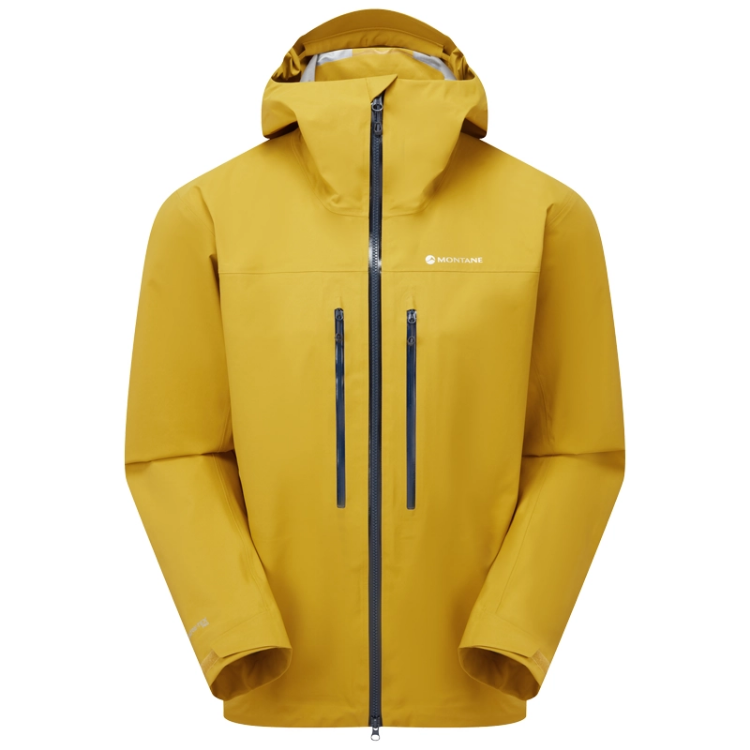 Montane Men's Torren Waterproof Jacket, Women's Torren Waterproof Jacket and Men's Cetus Waterproof Jacket and Women's Cetus Waterproof Jacket all use a Petrichor waterproof membrane, the most breathable PFAS Free membrane that we are aware of and they feel lovely and soft and are very light. The Torren are more mountaineer biased with boxier fits for down jackets and a helmet accepting hood, whilst the walkers Cetus jacket has a longer length and a regular fit and hood.
Montane Men's Torren Waterproof Jacket, Women's Torren Waterproof Jacket and Men's Cetus Waterproof Jacket and Women's Cetus Waterproof Jacket all use a Petrichor waterproof membrane, the most breathable PFAS Free membrane that we are aware of and they feel lovely and soft and are very light. The Torren are more mountaineer biased with boxier fits for down jackets and a helmet accepting hood, whilst the walkers Cetus jacket has a longer length and a regular fit and hood.
Montane Men's Alta XT Jacket and Women's Alta XT Jacket are things of beauty and mark the return of Gore-Tex Pro waterproofs with a bang. For serious mountaineers that prize reliablility and ruggedness against all else. Montane have pulled out all the stops to make this the best jacket that we've seen and what great colours too.
Patagonia Men's M10 Anorak, there's nothing else out there like it and as you climb the hardest routes in the harshest environments you'll feel yourself saving the planet at the same time with this bluesign® approved, Fair Trade Certified™ waterproof beaut. Cool as!
Rab VR Summit Jacket and Women's VR Summit Jacket lined softshell jackets that move moisture away from you super efficiently and keep a surprising amount of moisture out if you keep moving.
Montane Men's Tenacity Nano Hooded Softshell Jacket, Men's Tenacity Nano Softshell Jacket, Men's Tenacity XT Hoodie walkers and mountaineers softshells (although Chris loves climbing in his Nano Hoody) in a range of thcknesses.
Mountain Equipment Squall Hooded Men's Jacket and Squall Hooded Women's Jacket lightweight, tough, weather-resistant softshell for mountaineers with offset zip at the chin to make your ascent that bit sweeter.
Whats down below
Sprayway Alluvial Men's Rainpant and Alluvial Women's Rainpant excellent walkers waterproof trousers with a 3/4 lnegth side zip to help you get them on easily.
Montane Men's Alta Pant match up with the awesome Alta XT Jacket these are bibs really and will fill any Scottish Winter mountaineer with joy.
Patagonia Men's M10 Storm Pants have been developed in combination with Patagonia's most discenring ambassadors and are phenomenal Alpinists waterproof pants/trousers.
Rab Torque Vapour-Rise Pants and Incline VR Pants Women's are made from the same materials as the VR Summit Jacket and may mean that you almost never reach for your waterproof shell trousers.
Montane Men's Tenacity XT Pants, Men's Tenacity Pants softshell pants for autumn and winter, if it gets proper knobbling then put a legging underneath.
Better look after it all
Nikwax Tech Wash, Tech Wash / TX.Direct Twin Pack and TX.Direct Spray-On clean and re-treat your waterproofs with Tech Wash and TX.Direct. Top up your retreating or treat your softshell exterior with TX.Direct Spray On.
Grangers Performance Wash Concentrate, Clothing Repel, Wash and Repel 2 in 1 and Performance Repel Plus clean and treat your waterproofs with performance wash concentrate and clothing repel or use the Wash and Repel 2 in 1 which is slightly less effective but only means one wash cycle each time. Use the Performance Repel Plus spray to top up your retreating or treat your softshells exterior.


